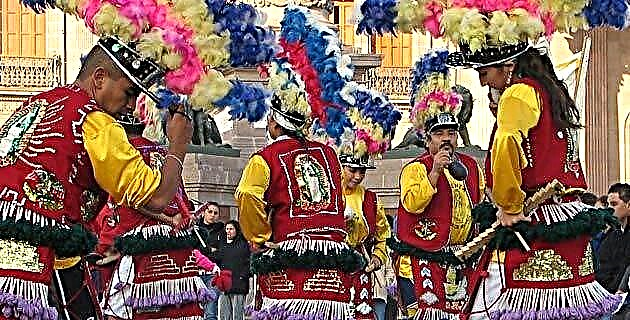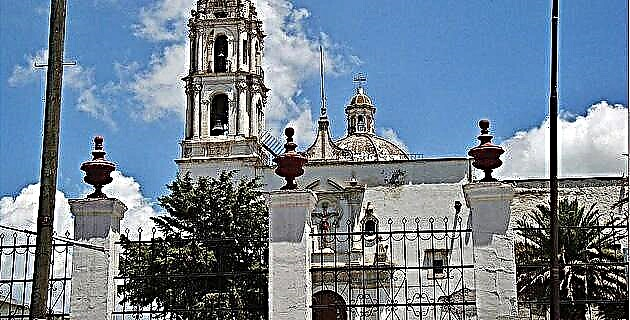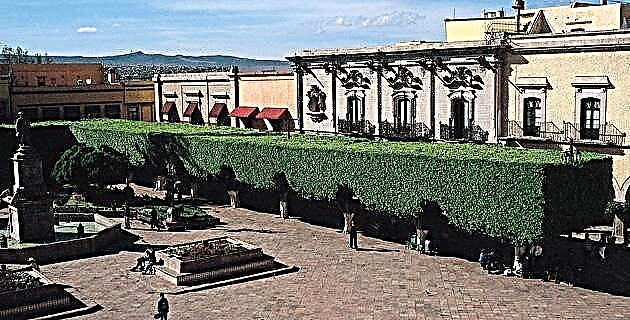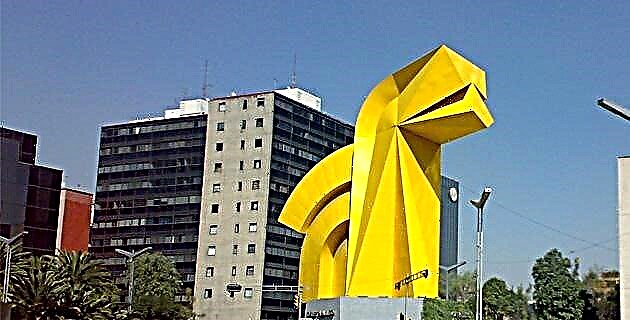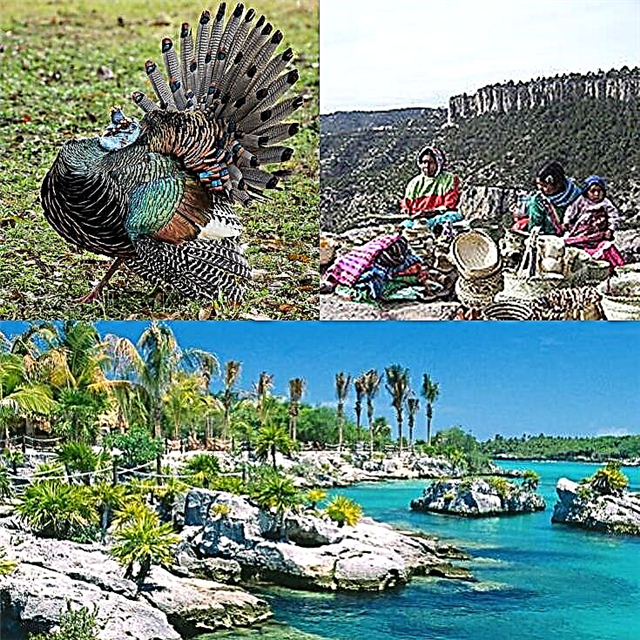The question can have several answers, all of great interest to people who plan to come to know this fascinating country.
What are diversity and megadiversity?

To clarify what we mean by mega-diversity, the most practical thing is to first specify what diversity is. The dictionary of the Royal Spanish Academy defines the term "Diversity" as "Variety, dissimilarity, difference" and as "Abundance, a large number of various different things"
In this way, when talking about the diversity of a country, reference can be made to any facet of its natural, human resources, or its culture. And "mega diversity" would obviously be diversity to a very high or gigantic degree.
However, the concept of diversity is widely used to refer to living beings, or "biodiversity" and without a doubt in this field Mexico is one of the first nations on the planet.
Mexico is in the world's top 5 among the countries with the highest number of plant species, mammals, reptiles and amphibians, ranking 11th in birds.

But when talking about Mexican diversity, other fields in which the country is varied and enormous cannot be overlooked, such as geographic spaces, where there are long coastlines in the two largest oceans on the planet, islands , jungles, mountains, volcanoes, snowy mountains, deserts, rivers, valleys and plains.
Other areas in which Mexico has a significant or gigantic diversity are climates, ethnicities, languages, cultural particularities, folkloric manifestations and gastronomy, to mention some of the most relevant
Mexican megabiodiversity

Mexico ranks fifth in the world in vascular plants (those with roots, stems and leaves), with 23,424 registered species, only surpassed by Brazil, Colombia, China and Indonesia.
With its 864 species of reptiles, Mexico is second in the world ranking, a class of animals that has its greatest biodiversity in Australia, with 880 species.
In mammals, the "superior" class of living beings that humans enter, Mexico has 564 species, a figure that leads the country in the planetary bronze medal, a category in which gold is for Indonesia and silver for Brazil .

In amphibians, the country of the drunk toad or Mexican burrowing toad, has 376 species, which are worth it for the fifth position in the world. In this class, the top 4 on the list are Brazil, Colombia, Ecuador, and Peru.
This megadiversity is determined by many factors, even prehistoric. Mexico managed to keep a good part of the fauna and flora of two continents that were separated, North America and South America.
Mexico is one of the 3 megadiverse countries with Atlantic and Pacific coasts; the other two are Colombia and the United States.
Much of the Mexican territory is in the Intertropical Zone, whose conditions are more conducive to biodiversity.
Of course, the size of the country also has to do with it and Mexico, with its almost two million square kilometers, ranks 14th in area.
A very unique, profitable and endangered megabiodiversity

In the Mexican biodiversity there are wonderful species that enrich the planet's ecosystems and constitute attractions for gastronomic tourism and nature observation.
Including both vascular and non-vascular plants (algae, mosses and others), in Mexico there are 26,495 described species, including beautiful ferns, shrubs, trees, floral plants, palms, herbs, grasses and others.
Several Mexican populations owe part of their tourist trends and their economy to their identification with some plant or fruit and its derivatives. The Valle de Guadalupe with the noble grape, Zacatlán with the apple, Calvillo with the guava, Uruapan with the avocado, some indigenous peoples with hallucinogenic mushrooms and several towns with their colorful flower fairs.

Likewise, the observation of the fauna constitutes an interesting tourist attraction in several Mexican territories. For example, the sighting of the monarch butterfly in Michoacán, of whales along the Baja California Peninsula and the observation of dolphins, turtles, sea lions and other species in many places.
The possession of so much natural wealth also entails a responsibility to the planet. The more you have, the more you must care for and preserve.

Among the extraordinary Mexican birds that are threatened or at risk of extinction are the ocellated turkey, the prairie rooster, the Tamaulipas parrot, the harpy eagle and the Californian condor.
The list of mammals includes precious animals such as the jaguar, the tigrillo, the volcano rabbit, the spider monkey and the Chihuahua mouse. Similar lists can be made with amphibians, reptiles, and other kinds of animals.
The ethnic megadiversity

There are 62 ethnic groups in Mexico and there would be many more if contagious diseases and abuses as a result of the Spanish conquest had not extinguished several of them.
The ethnic groups that managed to survive preserved their languages, traditions, customs, community organization, folklore, music, art, crafts, gastronomy, clothing and rituals.
Some of the previous dimensions were preserved almost intact to those of the origins and others were mixed and enriched with the Hispanic culture and other later cultural processes.
Among the most important indigenous ethnic groups in Mexico today are the Mayas, Purépechas, Rrámuris or Tarahumara, Mixes, Huichols, Tzotziles and Coras.

Some of these ethnic groups lived isolated or semi-isolated, developing a mainly collecting subsistence activity; others formed tribes, built villages and towns with formal dwellings, and practiced agriculture and farming; and the most advanced were able to build cities of tens of thousands of inhabitants, which astonished the conquerors upon their arrival.
In Mexico there are currently more than 15 million indigenous people who occupy about 20% of the national territory.

The indigenous people continue to fight for the full recognition of their non-indigenous fellow citizens, after centuries of persecution by the conquerors and wars and disagreements with their Mexican countrymen.
One of the measures in the right direction has been to integrate indigenous communities in the sustainable tourist use of the spaces they occupy.
Mexico is the second country on the planet to integrate its founding ethnic groups in the protection and management of national ecosystems.
The linguistic mega-diversity

The Mexican linguistic mega-diversity is derived from the ethnic mega-diversity. Currently, more than 60 languages other than Spanish are spoken in Mexico, without considering the more than 360 variants of the core speech.
Mexico is among the 10 States with the greatest language diversity in the world, along with other nations characterized by their secular ethnic richness, such as Brazil, India, Indonesia, Australia, Nigeria and 4 other African countries.
As of the promulgation in 2003 of the General Law of Linguistic Rights of Indigenous Peoples, both indigenous languages and Spanish were declared “national languages”, having the same validity throughout the Mexican territory.

Curiously, the objective of the conquest to Castilianize the indigenous peoples by hook or by crook had a positive side.
Many Spanish missionaries and scholars forced themselves to learn the native languages to better understand themselves with the Indians. Dictionaries, grammars, and other texts emerged from that learning process that helped preserve Indian speech.
Thus, indigenous Mexican languages such as Nahuatl, Mayan, Mixtec, Otomí and Purépecha, were used for the first time in the printed word with Latin characters.
At the national level, two languages are unofficially recognized in Mexico: Spanish and Nahuatl. Nahuatl is spoken by 1.73 million people, Yucatec Mayan by more than 850 thousand, Mixtec and Tzeltal by more than 500 thousand, and Zapotec and Tzotzil by almost 500 thousand.
The geographic megadiversity

Mexico has 9330 km of continental coasts on the Atlantic and Pacific oceans, including in this a gulf that is almost an inland sea, the Gulf of California or Sea of Cortez. In the extension of its coastline, Mexico is only surpassed in America by Canada.
To its 1.96 million square kilometers of continental surface, Mexico has more than 7 thousand of insular territory. Of the 32 Mexican federal entities, 16 have maritime islands.
The Mexican Republic has more than 2,100 islands and islets, the largest being Isla Tiburon, in the Gulf of California, with 1,200 square kilometers. The most populated and the ones that receive the most tourists are Cozumel and Isla Mujeres, in the Mexican Caribbean.

It is estimated that Mexico had more than 250 thousand square kilometers of forests, which have been reduced to just over 40 thousand due to irrational forestry, agriculture and mining.
Even so, there is a lot of jungle left in Mexico, like the Lacandon Jungle in the southern state of Chiapas, of almost a million hectares, which is home to a good part of the country's biodiversity and water resources.
In the vertical dimension, Mexico is also high and diverse, with three volcanoes or peaks that exceed 5,000 meters above sea level, headed by the Pico de Orizaba, and another 6 with their peaks at more than 4,000 meters above sea level, plus a multitude of smaller mountains.

Mexican deserts are other immense, dazzling, and varied ecosystems. The country's wastelands are headed by the Chihuahuan Desert, which it shares with the United States. In the Chihuahuan wilderness alone there are 350 types of cactus. Another imposing Mexican desert is that of Sonora.
To the above, we must add the contributions to the diversity of lakes, lake islands, rivers, savannas and other natural spaces, to complete the Mexican geographic megadiversity.
The climatic megadiversity

At the same time of any day, there may be Mexicans roasting in the heat in a northern desert, enjoying a spring climate in a city in the central Altiplano, or shivering in the cold in Monte Real or in the high areas of a snowy mountain.
That same day, a Mexican or foreign tourist may be sweating heavily having fun on an SUV in a desert circuit in Baja California, while another is skiing warmly in Coahuila and a third is in a swimsuit on one of the warm and paradisiacal beaches of the Riviera Maya or the Riviera Nayarit.
The relief and the oceans have a decisive influence on the conformation of the Mexican climate, with nearby areas, but of different altitude, with very different climates.

In the north of the country, where the great deserts are located, the climate is very dry, hot during the day and cool at night.
Most of the central and central north zone has a dry climate, with average annual temperatures between 22 and 26 ° C.
In the coastal plains of the Gulf of Mexico and the Pacific, the Yucatan peninsula, the Isthmus of Tehuantepec and Chiapas, the environment is humid and sub-humid.
The cultural megadiversity

Culture has innumerable areas; from agriculture to painting, through dance and cooking; from breeding to industry, through music and archeology.
Mexico is also very diverse or megadiverse in the previous cultural dimensions and it would be endless to refer to all of them. Let's take as an example two, dance and gastronomy, both for how pleasant they are, and for their interest in tourism.
Several Mexican dances and diverse folkloric manifestations come from pre-Hispanic times, and others originated or enlarged through cultural mixing with Europeans and later cultures.
The Rito de los Voladores de Papantla, the typical dance performance that most attracts tourists visiting Mexico, has changed little since pre-Columbian times.

The jarabe tapatío, the most internationally known Mexican folk dance, dates from the times of the Mexican Revolution in its modern version, but has antecedents in colonial times.
In Chiapas, Los Parachicos, a manifestation of the viceregal period with pre-Columbian reminiscences, constitute the main attraction of La Fiesta Grande de Chiapa de Corzo.
The Son Huasteco and its Zapateado, emblem of the Huasteca Region, is more recent, since it emerged in the 19th century with indigenous, Spanish and African influences.

All these dances are inextricably linked to rhythms performed with a great variety of pre-Hispanic musical instruments and with those brought by the Spanish and other later cultures.
Mexico is at the head of the peoples of America in the showiness and diversity of its folkloric expressions.
The gastronomic megadiversity

Who doesn't love a Mexican style mutton barbecue? The method of cooking the meat, introducing it in an oven-hole lined with maguey leaves and heated with red-hot volcanic stones, refers to the times of the Aztec emperors before the colony. The natives barbecued with deer and birds; the ram was brought by the Spanish.
In Yucatán, the Mayans were pioneers in the creation of sauces, particularly with the habanero pepper, which does very well in the region. These sauces went with different game meats, such as venison, wild boar, pheasant and squirrel, as well as fish and shellfish. The famous cochinita pibil had to wait for the Spanish to introduce the Iberian pig.

The mole poblano, another Mexican gastronomic emblem, was an Aztec invention that did not have to wait for imported meat, since from the beginning the complex sauce was combined with the turkey or domestic turkey.
The popular taco can have many fillings, ancient or modern, but the essential component is the pre-Hispanic corn tortilla.

In the harsh northern lands, the Rarámuri learned to eat whatever they got from the wild, including mushrooms, roots, worms, and even field rats.
More recent and urban are the universal Caesar Salad, created in Tijuana in the 1920s and the symbolic Margarita Cocktail, another Baja California invention from the 1940s.
Undoubtedly, the megadiverse Mexican culinary art can totally delight both classic palates and those looking for novel gastronomic experiences.
It is difficult to imagine a more megadiverse country than Mexico!

